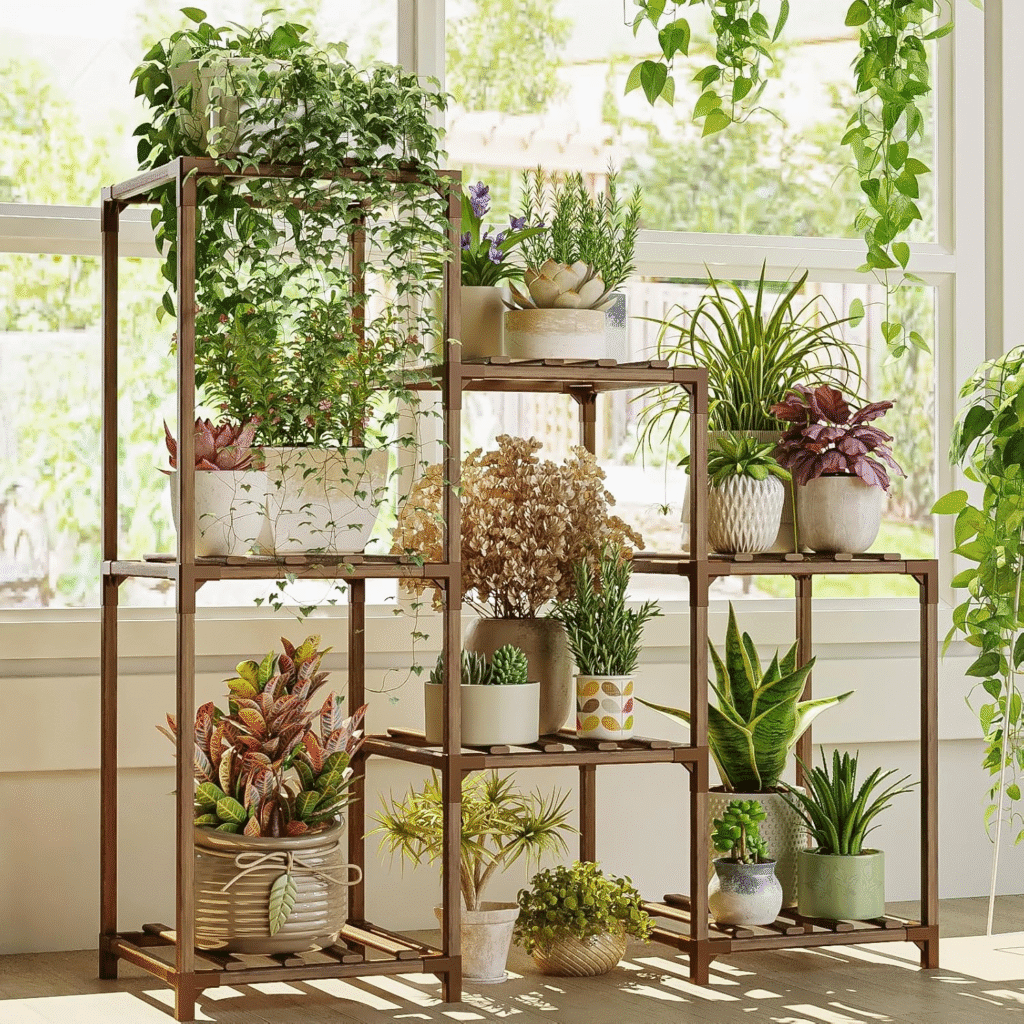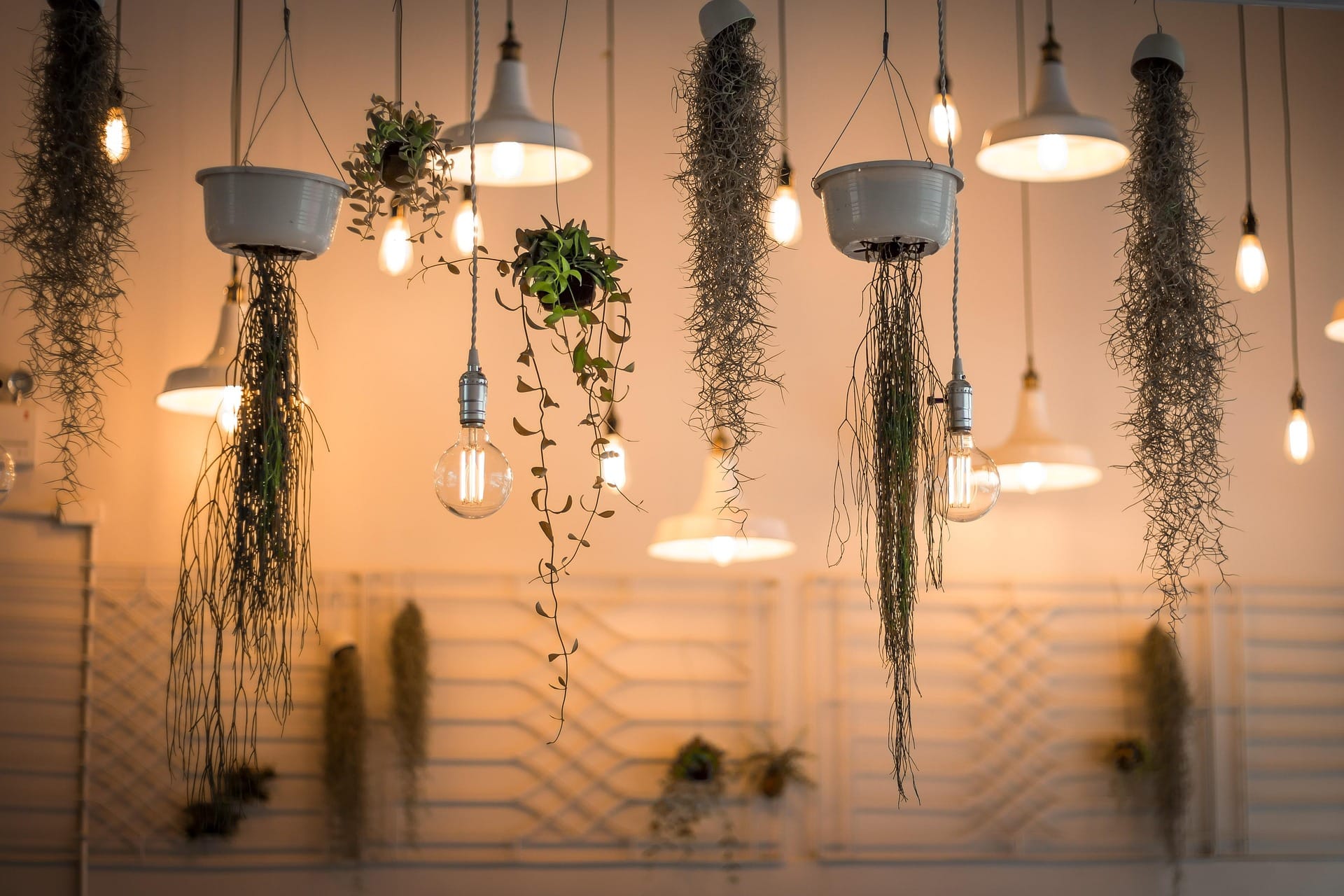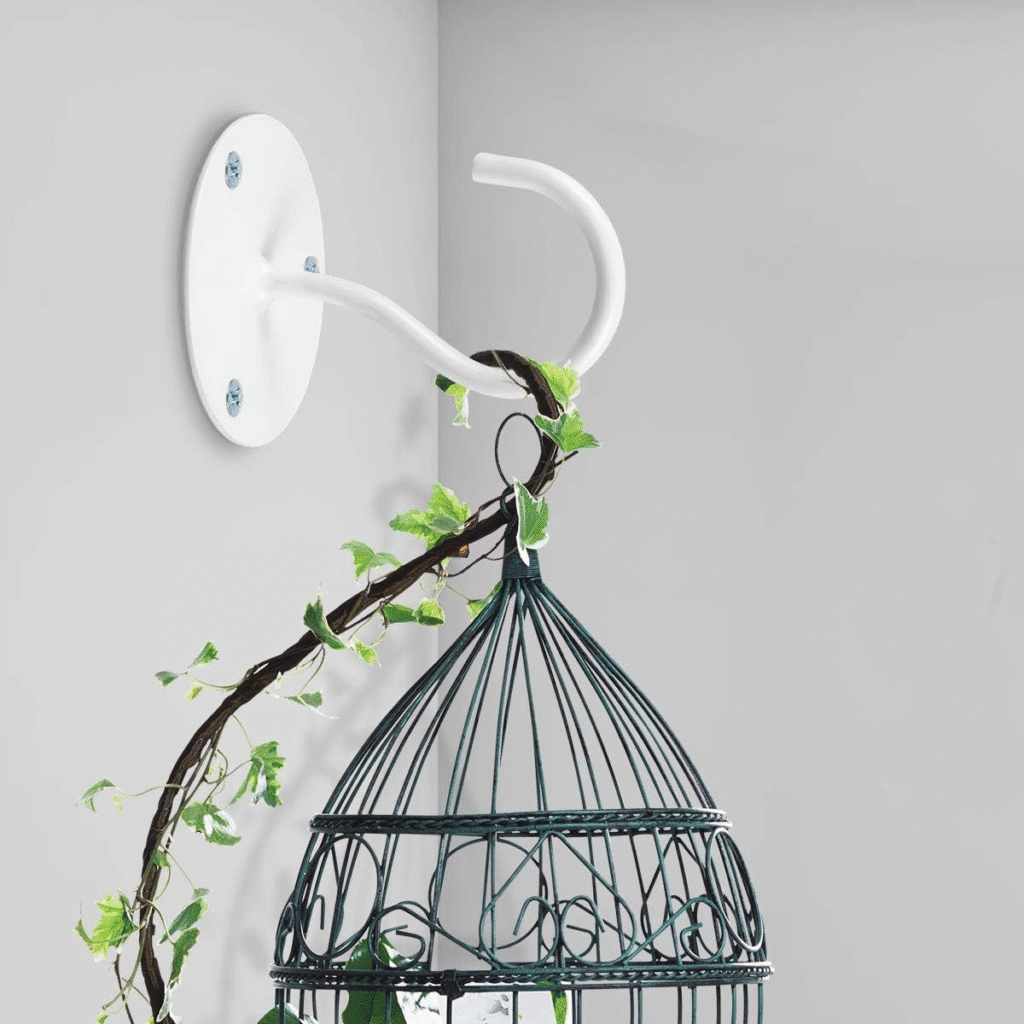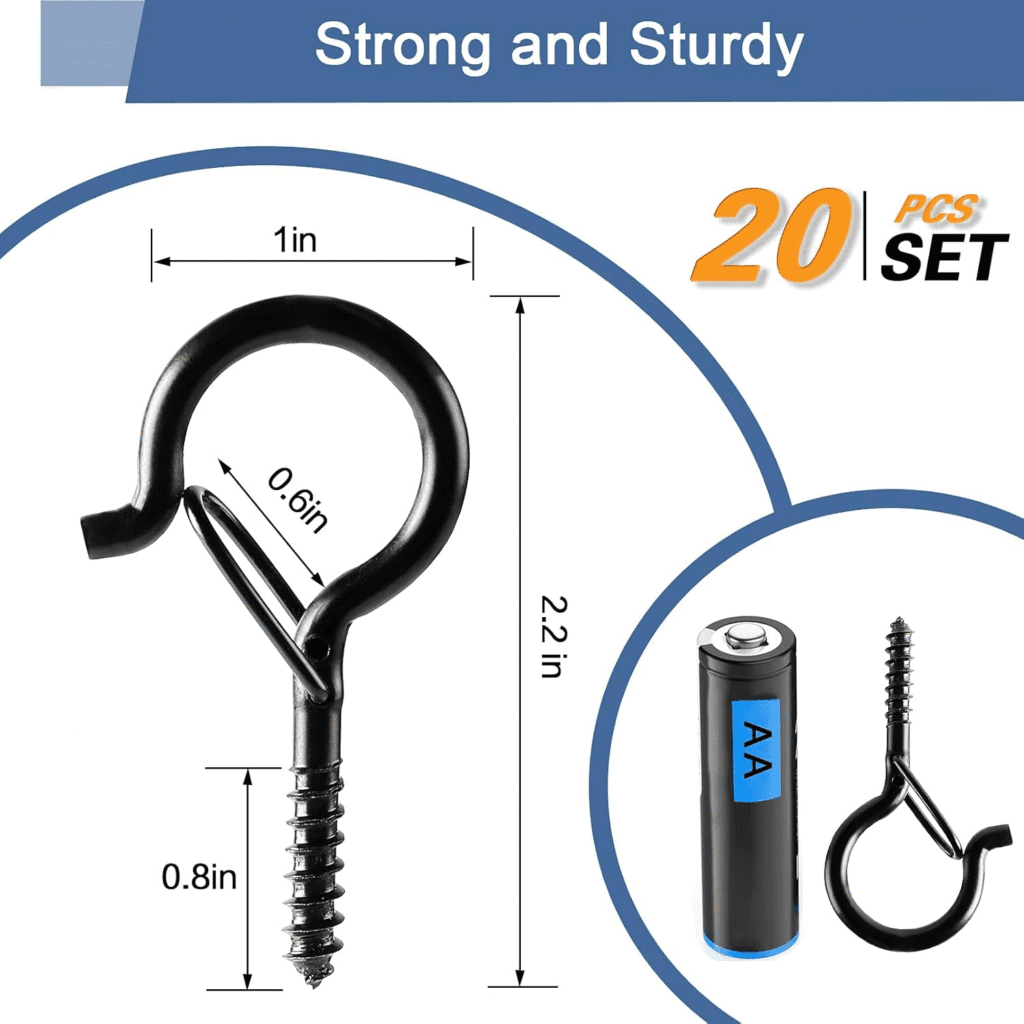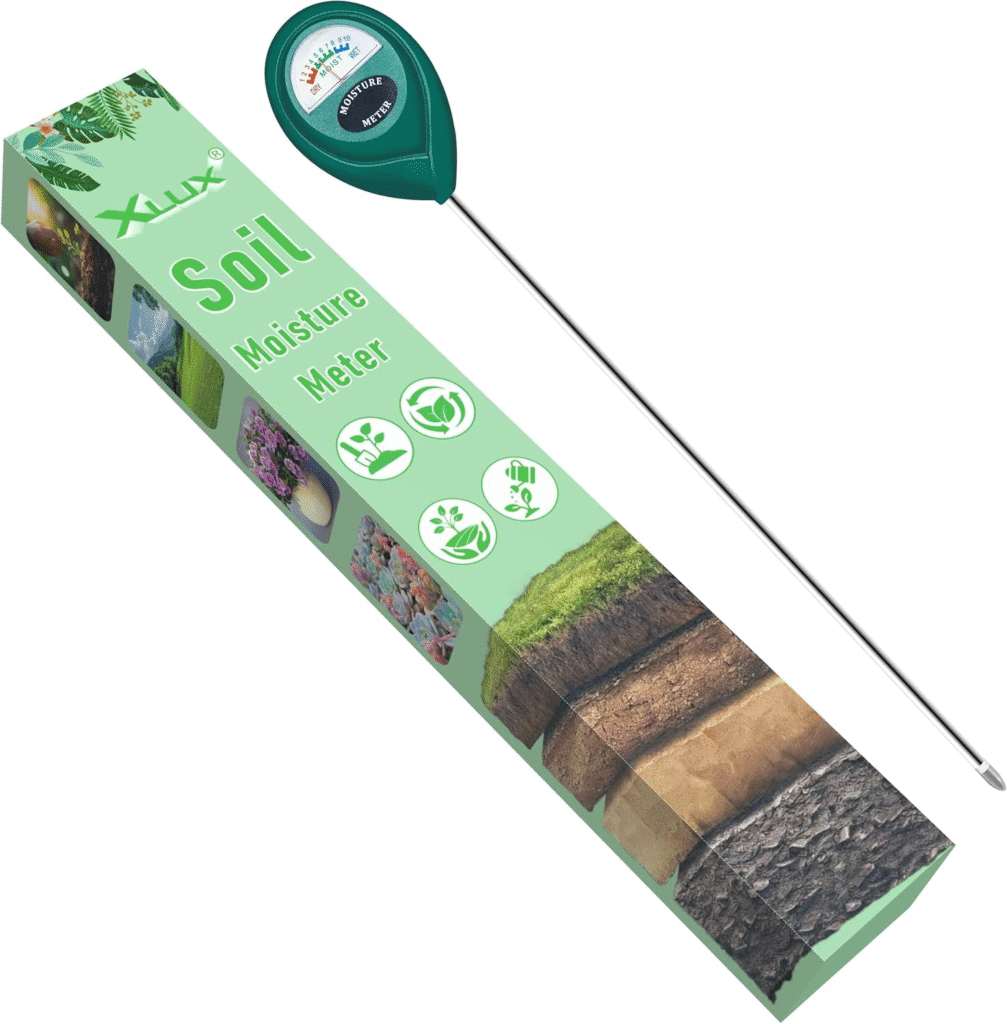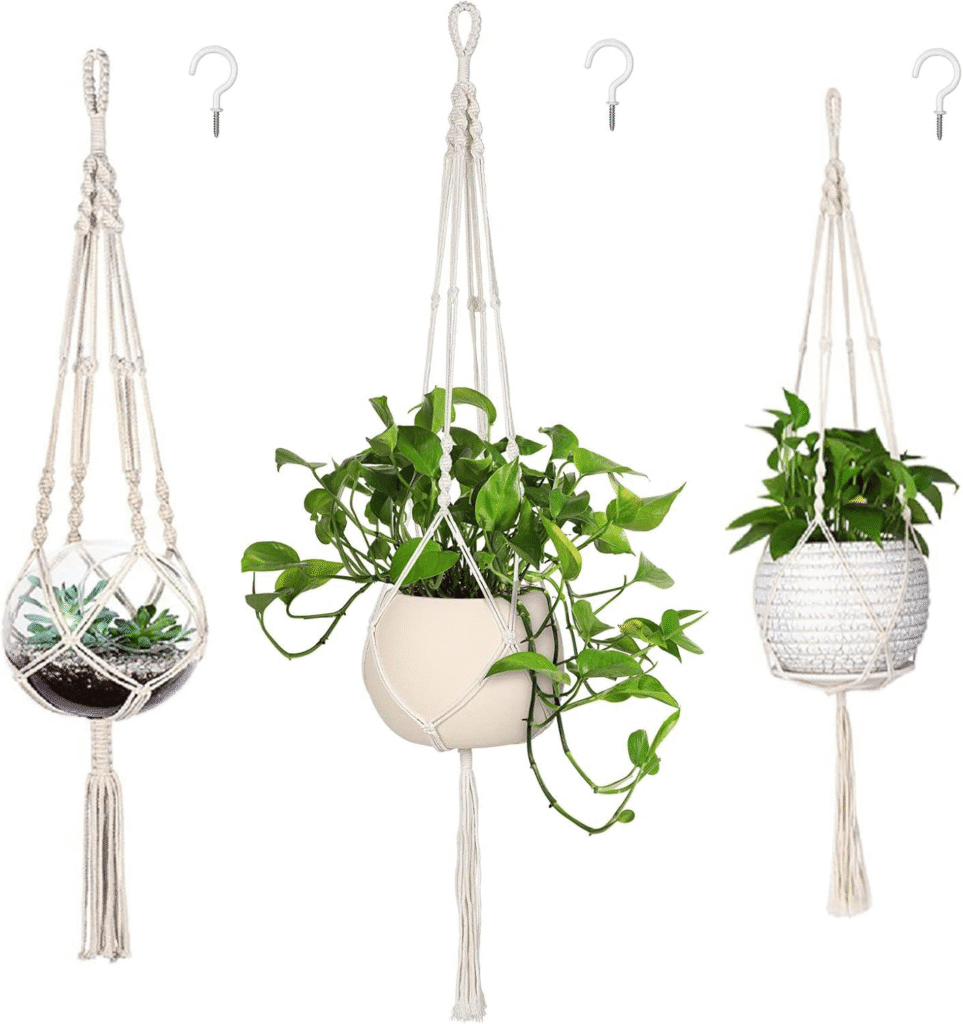Hanging plants add vertical drama, free up surface space, and soften architecture — they are one of the most cost-effective ways to introduce living texture into interiors. Hanging displays work for tiny apartments (freeing countertops) and large lofts (softening high ceilings). This guide covers everything from plant selection and hanger materials to macramé techniques, placement, safety, and ongoing care. Whether you want a single suspended specimen or a floating garden of mixed plants, this article provides research-backed guidance and practical, actionable steps.
We’ll reference related resources on Thrive Indoor Garden so readers can continue learning: Indoor Plant Styling Ideas, Low-Maintenance Indoor Plants, and our Tools guide Best Indoor Gardening Tools & Accessories.
1 — Why Hanging Plants Work (Design & Practical Benefits)
Hanging plants bring movement and scale to interiors without occupying valuable floor space. Psychologically, hanging greenery draws the eye upward and increases perceived ceiling height. Practically, hanging allows trailing plants to express their natural growth habit—vines become decorative elements rather than mere houseplants.
From a care perspective, hanging planters can help with drainage and airflow (when properly mounted) and reduce pest interactions with curious pets. Hanging plants are often used in kitchens (space saving) and bathrooms (humidity-loving varieties). Research on human response to nature supports using vertical plant displays as a low-cost method to improve mood and perceived workspace quality.
2 — Best Hanging Plants for Indoors (Trailing & Compact Options)
Choose plants that thrive with aerial exposure and trailing habits. Top candidates:
- Pothos (Epipremnum aureum): Extremely tolerant, fast trailing, forgiving of lighting variations.
- String of Pearls (Senecio rowleyanus): Delicate trailing succulent ideal for bright spots.
- Philodendron (Heartleaf): Lush foliage, easy care, excellent in hanging baskets.
- Spider Plant (Chlorophytum): Produces plantlets that trail; pet-safe and tolerant.
- String of Hearts (Ceropegia woodii): Elegant, thin trailing vines good for narrow pots.
- Trailing Fuchsia (for bright windows): Blooms add seasonal color (needs brighter light).
For bathrooms or humidity-rich rooms choose ferns or Calathea varieties if you can secure proper light. For sunlit spots, choose sun-tolerant trailing succulents.
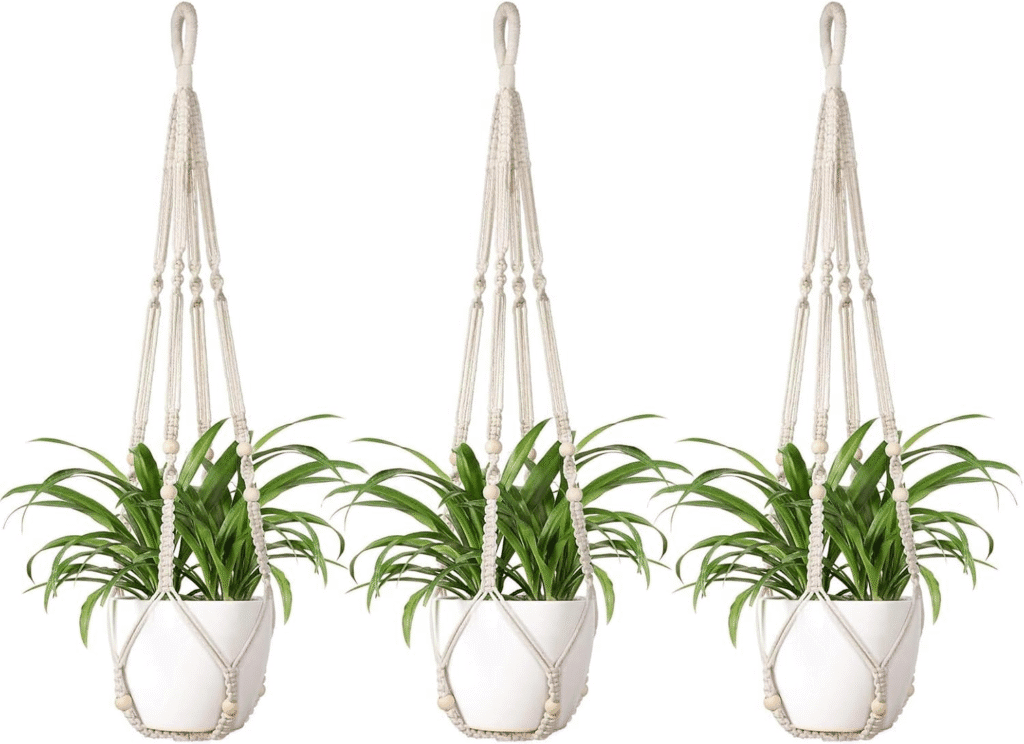
Live trailing plants and hanging baskets
Check Price on Amazon3 — Hanger Types & Materials: Macramé, Metal, Leather, Rope
- Macramé cotton rope: Soft, decorative, and light — excellent for boho interiors. Cotton is breathable and easy to knot.
- Natural jute or hemp: Earthy texture, strong but can fray; good for rustic themes.
- Metal hangers (chain/cable): Industrial, visually minimal, best for heavier pots and secure anchoring.
- Leather & synthetic straps: Sleek and modern; check load rating for safety.
Choosing material by room: Use water-resistant materials (metal or synthetic) in bathrooms; use natural fibers in dry living rooms.
4 — Mounting & Safety: Anchors, Load Ratings & Installation
Safety is essential. When hanging from ceilings and beams:
- Know your ceiling type: Drywall alone needs toggle or molly anchors; studs provide the strongest support. Use a stud-finder to locate structural framing.
- Choose rated hardware: Always use hooks/eye bolts rated for at least twice the weight of your pot+soil+water.
- Test load: Hang then gradually add weight; check for movement.
- Consider alternative supports: Use wall brackets or tension rods for renters (no drilling). Command hooks can work for very light pots but check weight limits.
5 — Pot Choices for Hanging (Drainage, Lightweight, Liner Use)
Because hanging pots need to minimize weight and maximize drainage:
- Lightweight planters: Plastic, coconut shell, and thin ceramic are good.
- Inner liner method: Use a lightweight plastic liner in a decorative outer pot to avoid wet weight.
- Drainage: If pot has drainage, use a saucer or liner and avoid overwatering. Consider self-watering hanging planters with reservoir systems if you prefer low maintenance.
6 — Macramé 101: Simple Knots & a Basic Hanging Hanger (DIY)
A small DIY section — concise steps for a 4-cord macramé hanger (beginner friendly).
Materials: 4 strands of 4–6 mm cotton rope (each 2–3 m long), a wooden ring, scissors, tape.
Step-by-step:
- Prepare cords: Fold four cords in half; attach to ring using lark’s head knots — you now have 8 working strands.
- Create the top knot: Gather 8 strands and tie a secure knot a few centimeters below the ring to form the hanger’s neck.
- Square knot pairs: Divide strands into 4 groups of two; tie square knots at approx. 10–12 cm from the top knot.
- Repeat level: Move 8–10 cm down and tie another row of square knots, alternating groups to create a net.
- Finish: Gather all strands and tie a final knot 6–8 cm below the second row; trim ends and optionally fringe or wrap with twine.
Styling tip: Use colored or braided cords for contrast or add beads for mid-century flair. For step visuals, reference our image set (use the macramé knot ALT text provided earlier).
7 — Watering, Feeding & Maintenance for Hanging Plants
Hanging plants need careful watering because runoff can drip onto floors and they dry faster in open air.
- Watering method: Use a jug with a long spout for accuracy. Water until excess drains and then allow the liner to dry slightly.
- Feed schedule: Feed lightly during the growing season with diluted liquid fertilizer.
- Pest checks: Inspect underside of leaves because hanging plants can hide pests. Quarantine new plants.
8 — Styling Compositions & Placement Ideas
- Clustered trio: three hanging planters at staggered heights over dining tables create a living chandelier.
- Window curtain of plants: multiple small hanging pots along a window rail produce a green screen.
- Shelf + hanging combo: pair a low shelf with a hanging pot above to create vertical flow.
- Layer heights: mix long trailing plants (Pothos) with more rigid forms (String of Pearls) to keep texture contrast.
What is the best plant for a low-light living room?
Snake Plant, ZZ Plant, and Chinese Evergreen are top picks for low-light spaces.
How do I style plants without cluttering the room?
Use one statement plant and two supporting groups (shelf + tabletop). Maintain negative space.
How often should I rotate plants?
Rotate monthly to encourage even light distribution and balanced growth.
Conclusion
Great plant styling is a balance between design and plant care. Start with one focal piece and build outward — combine texture, scale, and rhythm to create a cohesive look. If you’re new to plant care, read our starter guide for practical care tips: Indoor Gardening for Beginners. For the products used in styling, check our tools & accessories guide: Best Indoor Gardening Tools & Accessories.
Shop styling essentials on Amazon
